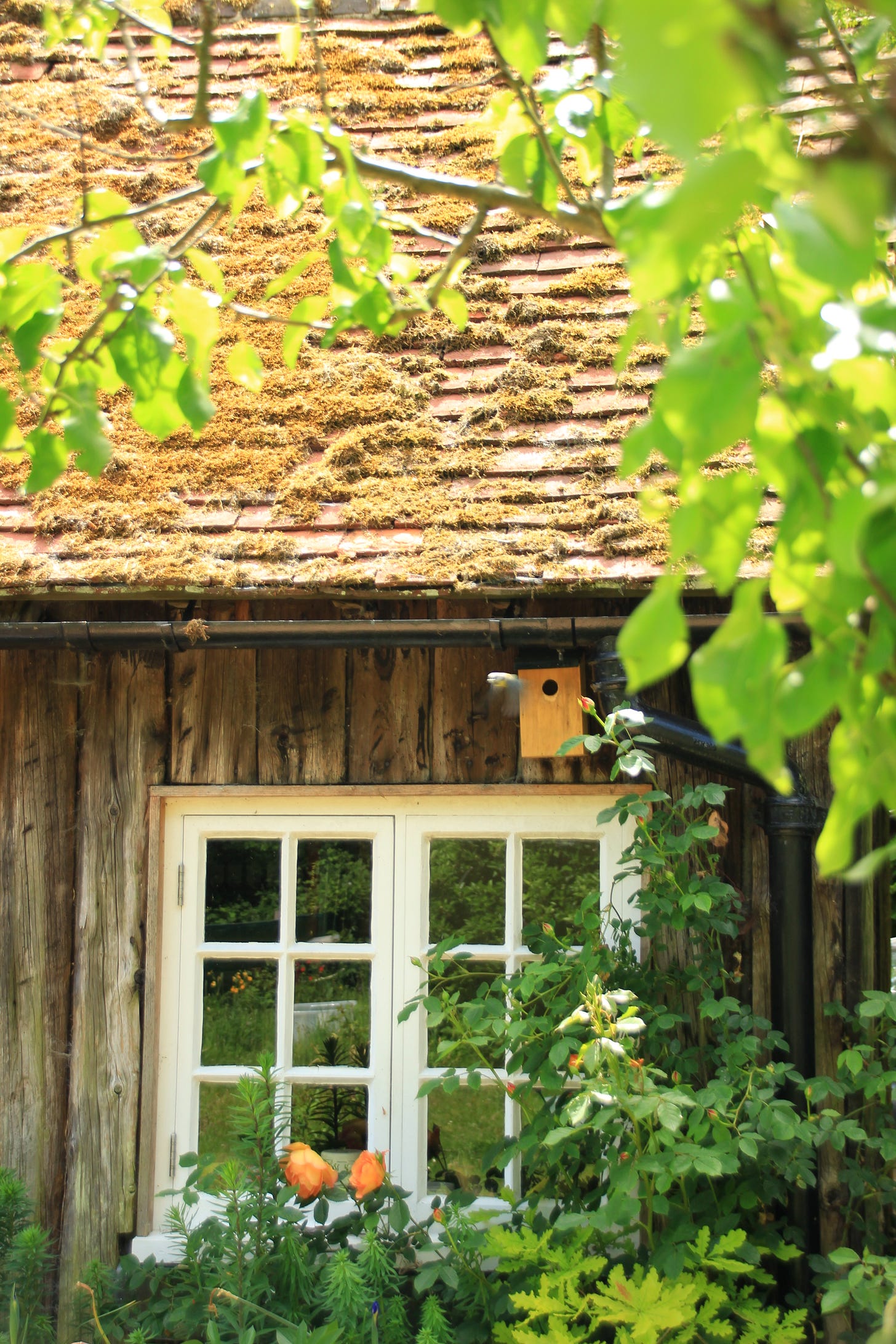I came catapulting into the kitchen in a state of gabbling excitement, exclaiming at such a rate that my husband only managed to make out the word ‘Tits!’, and had to ask me to repeat myself. “Blue Tits are nesting in the nest box we put up, I can hear the chicks cheeping!” I gasped out, composing myself to a barely more respectable level of excitement.
That first nest was in a birch-log styled nest box, wedged in the crook of the drainpipe, outside our ground floor 1980s-extention bathroom. For the next two weeks, whenever I was sat in the bath with its chipped enamel, (noting the cobweb and damp patch under the back of the sink basin, which I could only see from this angle), 5inches of water ebbing lukewarm around my pale limbs, I could gaze up at the bathroom window, wooden frame propped open, and hear the ‘tsee-tsee-tsee’ chatter and blurred movement of small birds behind the dimpled glass.
Blue Tits are the colours of a spring day in bird form; forsythia blooms against a clear sky, with a patch of white cloud on each cheek. Possibly one of our most familiar garden birds, Blue Tits, or Cyanistes caeruleus to give them their scientific name, are estimated to have a European population of up to 40 million pairs, with an approximate 3,600,000 breeding territories in the UK each spring and summer. Even in winter these birds are a common sight, often in large roving flocks, teamed up with other species tits and similar small birds, regularly coming to gardens in search of food. Naturally a woodland edge species, Blue Tits readily adapt to garden habitats, with their wide ranging diet of insects, fruit, nuts and seeds, making them easy to attract and cater for with supplementary feeding and/or wildlife friendly gardening methods. Nest boxes offer a similar niche for nest building as the Blue Tits preferred tree cavities, so are quickly accepted and utilised if well located.
I am writing this substack post, sitting at our garden table, listening to the high pitched squeaking of a whole new brood of Blue Tits. The nest box is a few metres away on the side of our outbuilding, tucked in amongst the buds of a climbing rose. Busy parent birds are dashing back and forth with a clockwork regularity, bringing a steady supply of caterpillars and other invertebrate food to the hungry chicks. The pear tree on the corner of the patio, not in full leaf and bereft of the glowing white blossom it produced earlier in the spring, is a favourite perch, and, the first thing the chicks will aim for when they take that first precipitous flight. From there, its through the garden border full of Aquiligea, and into the thick cover of the native hedge the forms the garden boundary.
If the weather is kind, the adults may well have a second brood, doubling their chances of sustaining the population into next spring.
Blue Tits may be common place and ‘ordinary’, but their presence is an essential component of my garden. From my earliest memories, gardens have always included Blue Tits – from buying red net bags of peanuts from the pet shop to hang up as feeders on cold frosted mornings, to begging my Dad to help me build a bird bath, to the first fledging from a nest box I provided…
Each year now I wait anxiously for the day the Blue Tit chicks fledge from the box, like the return of the Swifts in Ted Hugh’s poem, a small personal moment of reassurance: there was enough caterpillars in the oak trees, the world’s still working.





I love this 💚🌿 Blue tits are really special to me too.
Lovely! I recently read about something amazing about the blue crest of male Blue tits reflecting UV rays. So common and so unexpected, I wish we could see that color as well.